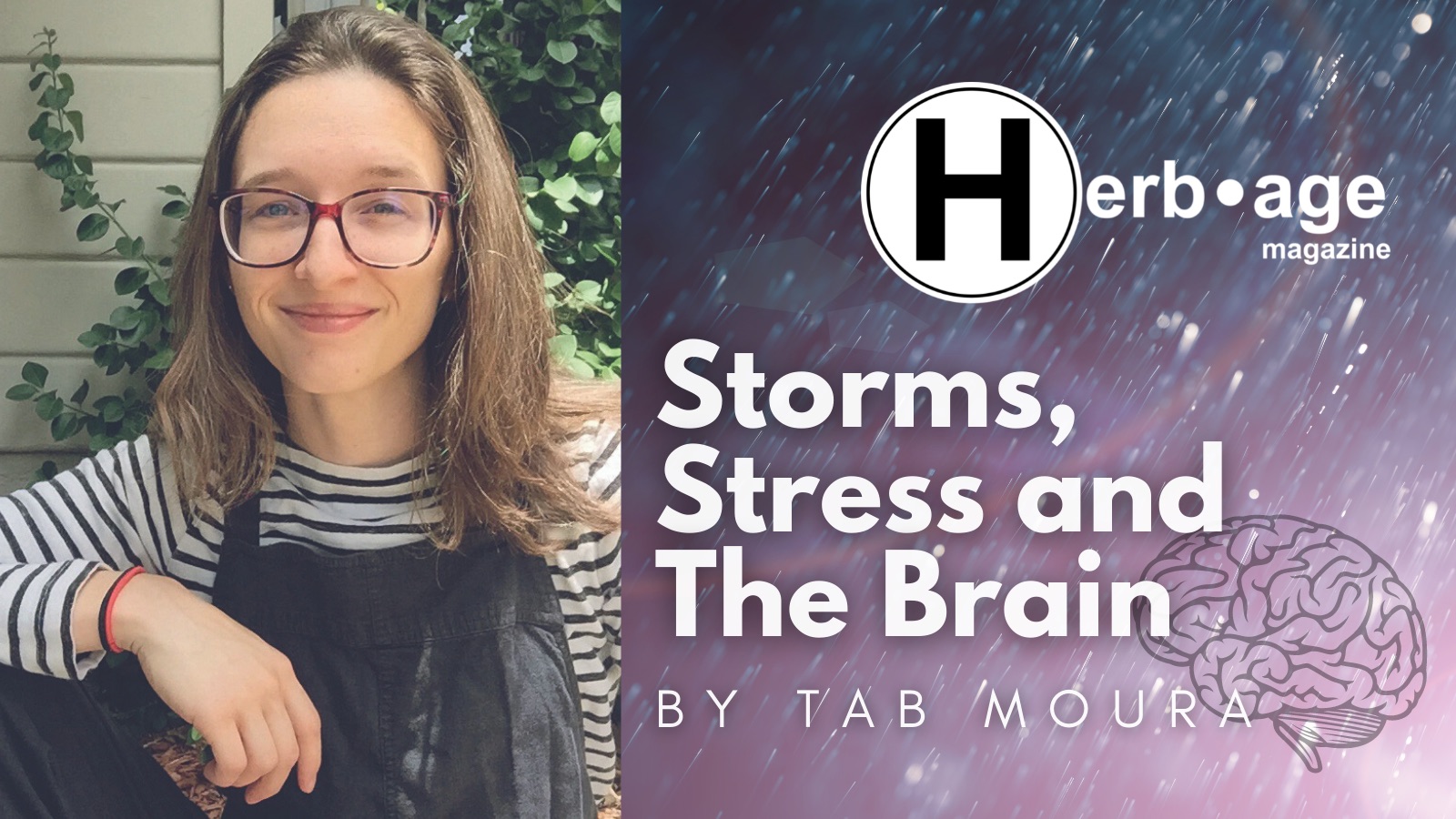By Tab Moura
I’m sitting here at the table listening to an Oklahoma thunderstorm, thinking about the meaning of life and the ice cream in my freezer. As you know, I have three amazing little girls who just so happen to use our favorite plant medicine, cannabis. Cannabis has been incredibly powerful in helping my daughters articulate how they are feeling while we transition to a new house. Cannabis has also been helpful in reducing the intensity of their anxiety, to be able to use more mental health tools with them.
Tonight as the sirens began to sound, my oldest was (and always is) the first one to notice. So I dropped the box I was holding and ran across the house to be the first one to say “time to remember storm safety!” Traditions are important, not just for community, but for safety. Our brains have special traditions for everyday life as well, remembering how to get from A to B like we always have… even the stressful stuff like tonight. We are very sensitive to storm anxiety in our home, because I’ve been through some bad storms in my life. This is also why I respond so quickly. We can be prepared, and confident at the same time.

Our brains are designed to quickly sort through information when we are stressed, but not all information. When we encounter stress, our hypothalamus is the first to respond, waking up the pituitary gland, a small structure with a big job. The pituitary gland sends signals to the adrenal glands on the kidneys, which then releases adrenaline. So before we even have a chance to critically process the stress we are experiencing, we already have adrenaline pumping through our bodies— this is how we were designed to respond, you aren’t getting ahead of yourself if your heart races during stress. Your body’s ability to survive relies on its ability to be alert.
Adrenaline = alert.
Sometimes we perceive this as anxiety if we don’t know how to respond. How we see ourselves while we’re handling stress makes a big difference in the grand scheme of things, this is where instinct meets critical thinking. After the adrenaline is released, the amygdala is alerted. The amygdala has stress sensors, it doesn’t know the difference between physical and emotional stress, because the only thing it can confirm is that it senses adrenaline. That’s where the prefrontal cortex comes in. The prefrontal cortex is where we assign emotions to our biological response. The prefrontal cortex is here to assess the threat and decide if it needs a greater or lesser response from us… it’s this part of my oldest that I am speaking to when I say “time to remember storm safety!” Just in time for her to decide if her body’s adrenaline means she’s in danger, or if she’s prepared.
This is an anomaly called Social Buffering. Researchers did a study that measured the effect of mother and child proximity on stress. It showed that young children, who were in close proximity to their mothers while processing stress, had less activity in their amygdala’s, and more in their prefrontal cortex.
What a magic trick right? Hah! None of this is a surprise; mother’s have known how important co-regulation is for centuries. Responding to our children allows them to regulate their responses, and it helps them to learn and retain the plans that keep them safe. Holding space with our children prepares them to process and manage all of life’s storms— real and metaphorical.
My daughter is a quick talker when she becomes anxious, so I began spitting out facts about storms, which prompted her to ask more questions. An active mind is an alert mind. “Is it windy? Is there any hail?” Her prefrontal cortex was able to judge for itself if she was safe— she just had to remember what to focus on.




